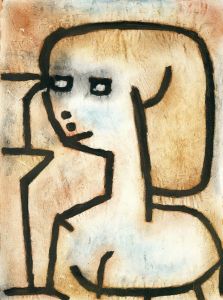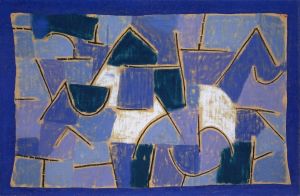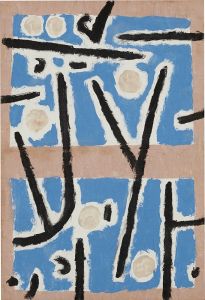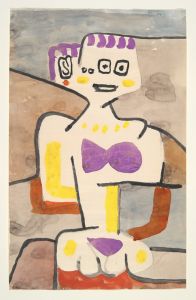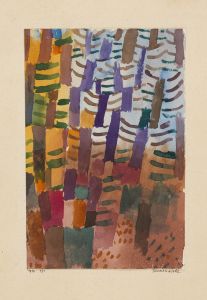
Kleine Schweizerlandschaft
A hand-painted replica of Paul Klee’s masterpiece Kleine Schweizerlandschaft, meticulously crafted by professional artists to capture the true essence of the original. Each piece is created with museum-quality canvas and rare mineral pigments, carefully painted by experienced artists with delicate brushstrokes and rich, layered colors to perfectly recreate the texture of the original artwork. Unlike machine-printed reproductions, this hand-painted version brings the painting to life, infused with the artist’s emotions and skill in every stroke. Whether for personal collection or home decoration, it instantly elevates the artistic atmosphere of any space.
Paul Klee's Kleine Schweizerlandschaft (translated as "Little Swiss Landscape") is a painting created by the Swiss-born German artist in 1917. Klee, a prominent figure in modern art, is known for his unique style that blends abstraction, symbolism, and expressionism. This particular work reflects Klee's fascination with landscapes and his ability to distill complex natural scenes into simplified, poetic compositions.
Kleine Schweizerlandschaft was created during a period when Klee was deeply engaged in exploring color theory and experimenting with various artistic techniques. The painting is characterized by its geometric forms and a harmonious interplay of colors, which are hallmarks of Klee's work. The title suggests that the piece was inspired by the Swiss landscape, likely drawing from Klee's personal connection to Switzerland, where he was born and where he spent much of his life.
The painting is executed in watercolor and pencil on paper, mounted on cardboard. This medium was frequently used by Klee, as it allowed him to achieve a delicate balance between transparency and texture. The composition of Kleine Schweizerlandschaft features abstracted shapes that evoke the essence of a natural scene, rather than depicting it in a realistic manner. Klee's approach invites viewers to interpret the work subjectively, engaging with the emotional and symbolic resonance of the forms and colors.
In 1917, Klee was living in Germany and teaching at the Bauhaus, an influential school of art, design, and architecture. This period marked a significant phase in his artistic development, as he synthesized various influences, including Cubism, Expressionism, and his own observations of nature. While Kleine Schweizerlandschaft does not explicitly align with any single movement, it exemplifies Klee's innovative approach to art-making and his ability to transcend traditional boundaries.
The painting is part of the collection of the Zentrum Paul Klee in Bern, Switzerland, a museum dedicated to the artist's life and work. The Zentrum Paul Klee houses a significant portion of Klee's oeuvre, offering insight into his creative process and artistic evolution. Kleine Schweizerlandschaft is considered a fine example of Klee's ability to capture the spirit of a place through abstraction and his mastery of color and form.
This work continues to be celebrated for its subtle beauty and its reflection of Klee's deep connection to the natural world. It stands as a testament to his enduring influence on modern art and his ability to convey profound meaning through seemingly simple compositions.






